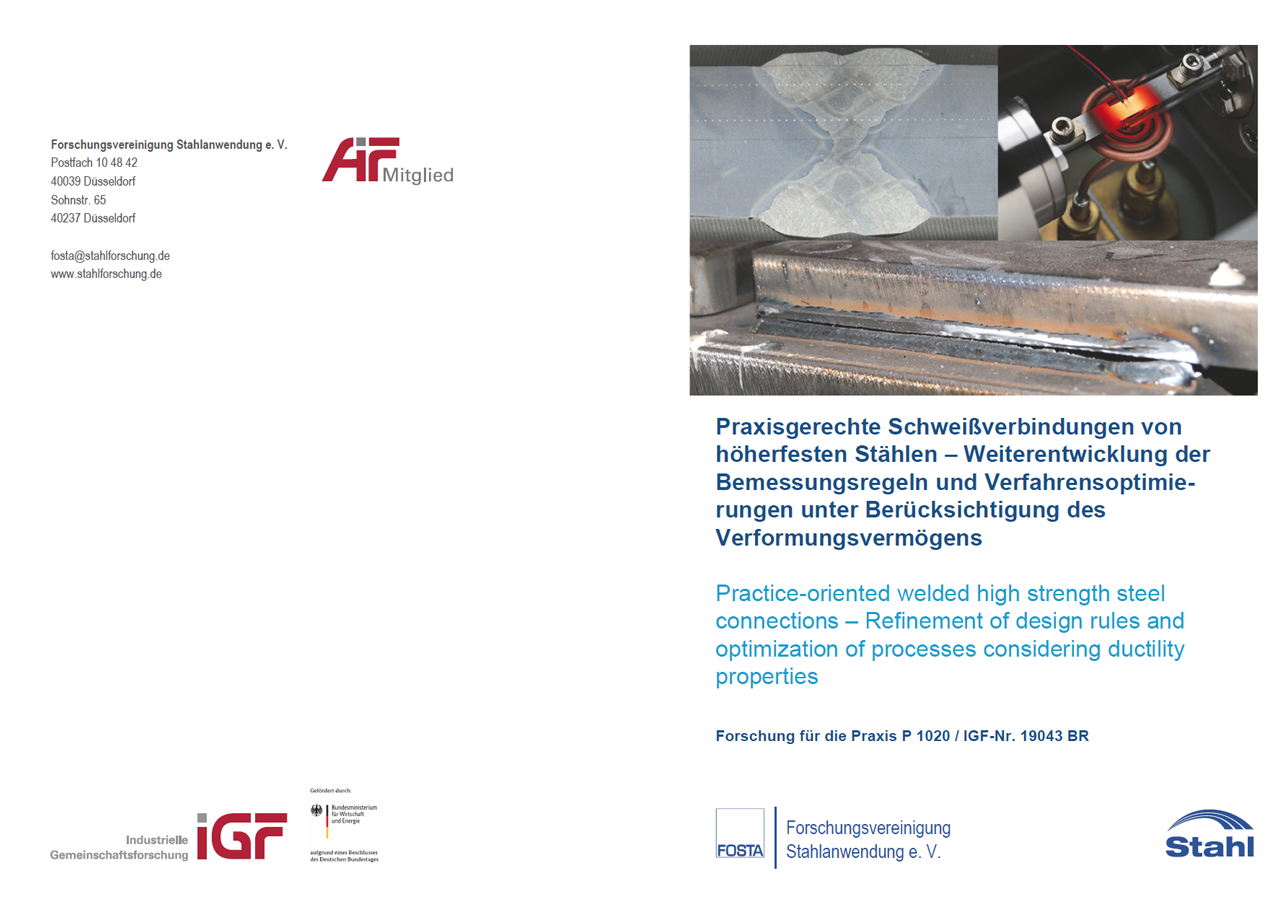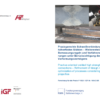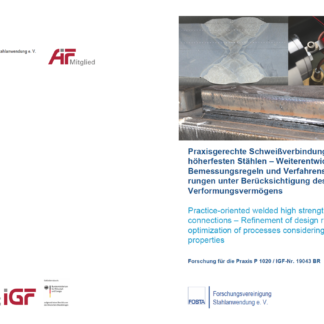Description
P 1020 – Practice-oriented welded high strength steel connections – Refinement of design rules and optimization of processes considering ductility properties
The use of high-strength structural steels in steel and plant construction is limited in its economic viability due to various corrections in design and execution. The aim of the research project was therefore to create a basis that would lead to a significant improvement in the operating conditions of high-strength steels in welded joints.
The need to improve the technical rules for design and execution occurred for a number of reasons. For example, the permissible weld stresses of matching and overmatching joints are too conservatively determined for many joint types and combinations of base and filler metals. The correlation coefficient βw was determined for the worst case where longitudinal fillet welds are subjected to parallel shear. For a large proportion of welded joints, it is not necessary that the strength of the base metal is reached or even exceeded. This applies, for example, to fillet welds of welded I- and box sections, hinged end plate connections, butt joints in areas of low stress and in many other cases.
In order to achieve the research objectives, the mechanical properties of welds were systematically investigated using a newly developed small parts test. In addition, the influence of the weld energy input on the transformation behaviour and the mechanical properties of high-strength steels of different manufacturing processes and steel grades was investigated.
By knowing the influence of the production parameters, it is possible to specifically consider the respective steels and required weld seam properties by selecting a suitable matching scenario, welding consumables and process parameters. This makes it possible to manufacture welded constructions from high-strength steels more economically and with greater process reliability.
Extensive experimental and numerical investigations were carried out to develop a modern design model. The new design model is based on a systematic separation of the mechanical properties of the weld seam and the construction related requirements. Within the scope of the investigations, longitudinal fillet welds of lap joints, transverse fillet welds of cruciform joints as well as partly and fully penetrated butt joints of various filler metals and production parameters were investigated. By considering the actual properties of the weld seams as a function of the filler metal and the cooling time t8/5 as well as the joint shape, more economical weld seam load-bearing capacities can be achieved. By a more economical design, weld volumes and sheet thicknesses can be considerably reduced, which leads to an increase in the economic efficiency of welded constructions of high-strength steels.
Main content only available in german language.
Published in:
May 2020
Authors:
Prof. Dr.-Ing. R. Stroetmann, Dipl.-Ing. T. Kästner, Dipl.-Ing. L. Werner, Dr.-Ing. A. Hälsig, Dipl.-Ing. S. Neyka, Dr.-Ing. M. Kusch, Prof. Dr. P. Mayr




